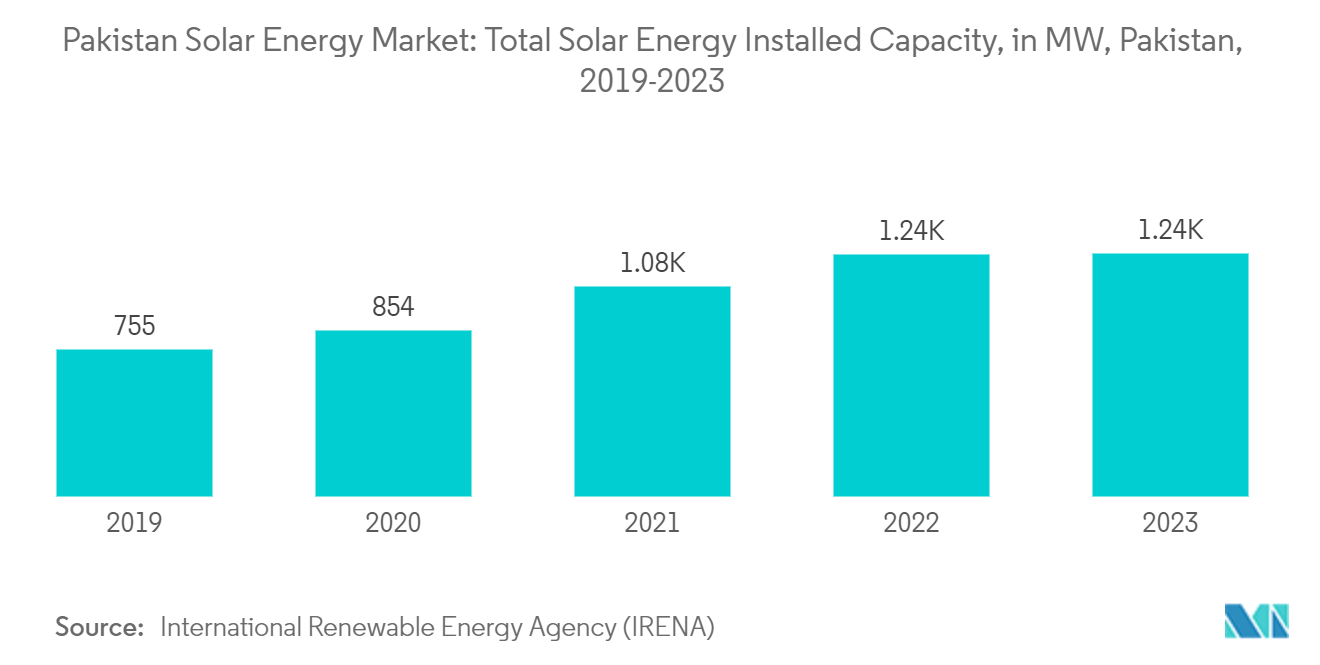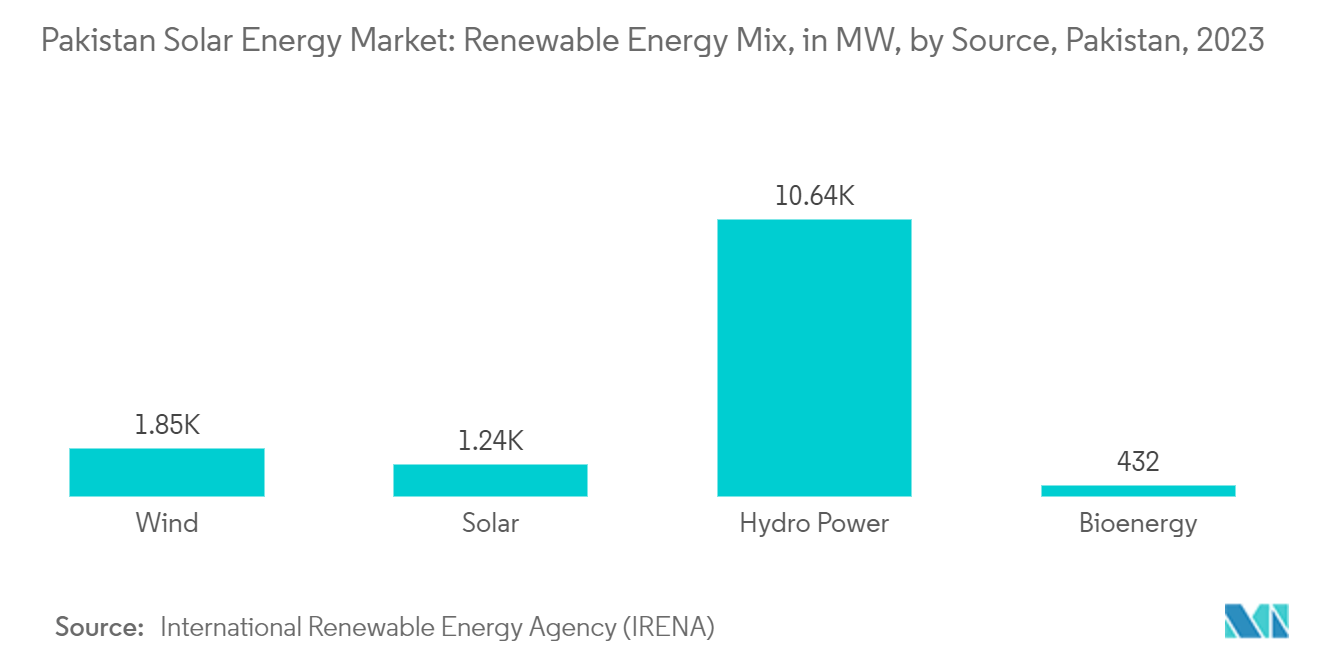Market Trends of Pakistan Solar Energy Industry
The Utility Sector is Expected to Dominate the Market
- Solar energy converts energy from sunlight into electricity directly using photovoltaics (PV) or indirectly using concentrated solar power.
- Due to the falling cost of solar modules and the number of upcoming projects, the utility sector will likely be the most significant part of the Pakistani solar energy market over the next few years.
- The Pakistani government has established lofty objectives, such as 30% of the nation's power coming from renewable sources by 2030. Through the Alternative Energy Development Board, the government is attempting to construct solar power facilities nationwide to meet these objectives.
- According to the International Renewable Energy Agency (IRENA), Pakistan's total solar installed capacity was 1,244 megawatts as of 2023, an increase of 17% compared to 2021. The country's government has proposed several efforts to raise the percentage of solar energy.
- In December 2023, Orient Energy Systems and JA Solar announced they completed Pakistan's first n-type utility-scale photovoltaic power plant project. The project adopts JA Solar's n-type high-efficiency modules, which have a capacity of 26 megawatts. It is installed on the premises of Lucky Cement plant, Pakistan's largest cement manufacturer.
- In March 2024, Hanersun Technologies agreed with My Energy, a local company, to construct a 500MW solar system in the country. The project is expected to have an investment of around USD 700 million.
- Hence, with government support, these projects are expected to make the utility sector the dominant force in Pakistan's solar energy industry in the coming years.

Supportive Government Policies are Driving the Market Demand
- The solar energy initiative would help government buildings, different sectors, and tube wells shift from diesel to solar power. The power plants operating on diesel, coal, and furnace oil will be partially replaced.
- Solar PV power entered Pakistan’s energy mix in 2013 after the government introduced a set of support policies to foster renewable energy development. The Pakistani government knows that Pakistan has an average of 9.5 hours of sunlight daily. According to the Private Power and Infrastructure Board of the Ministry of Energy, seven 530-megawatt solar projects are operational and supplying electricity to the national grid.
- Pakistan's renewable energy mix consists of solar, wind, hydroelectricity, and bioenergy. As of 2023, the country's solar energy industry contributed nearly 8.7% of the total renewable energy capacity. Due to various government initiatives, this share is likely to increase over the upcoming years.
- In September 2022, the Pakistani government approved the National Solar Energy Initiative to produce 10,000 megawatts (MW) of electricity through solar energy projects in the following months. The initiative aims to reduce the import bill of costly diesel and furnace oil, thus creating demand in the country's utility sector. Hence, the government will likely develop more utility-scale projects, increasing the renewable energy mix to achieve its targets.
- In August 2023, the Government of Pakistan designed a new solar PV auction plan to deploy 9 gigawatts of solar PV power. This clean energy initiative will involve installing 6 gigawatts of large-scale solar PV projects, 2 gigawatts of medium-scale solar PV projects, and 1 gigawatt of rooftop solar PV capacity.
- Thus, considering the government initiatives and policies, the Pakistani solar energy market is expected to grow further during the forecast period.


